Copenhagen
Fyn Road Trip: A Loop Around Denmark's Fairy-Tale Island
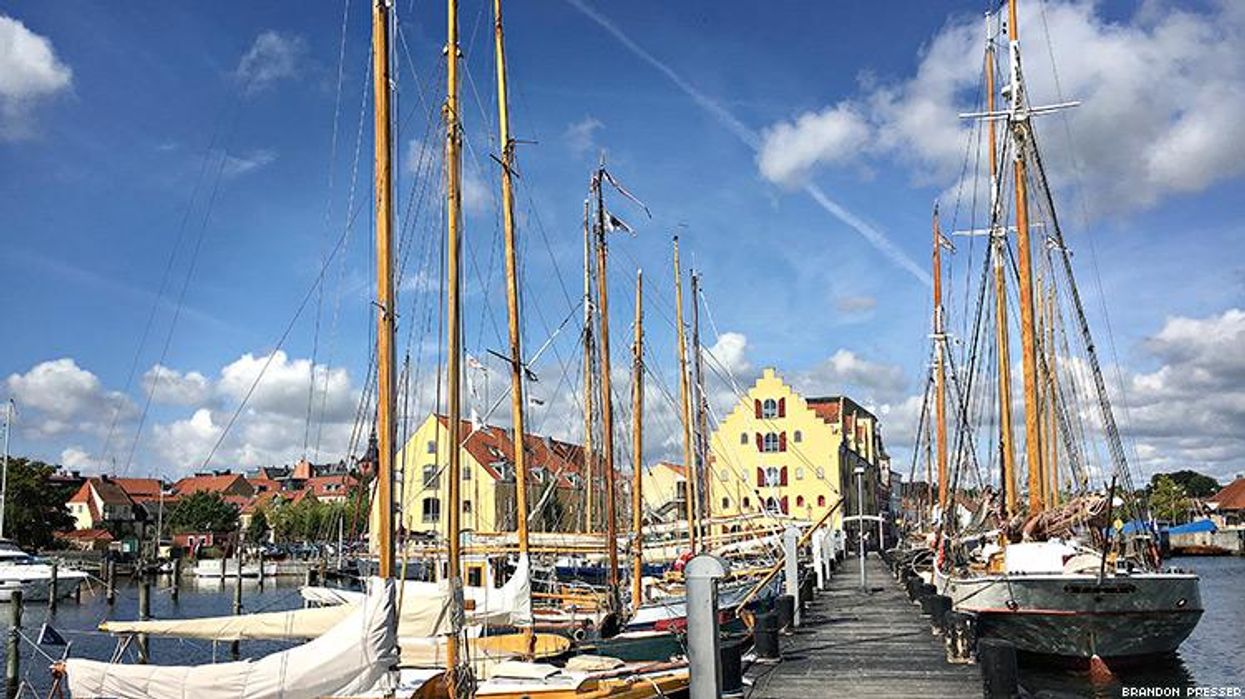
Five days exploring the birthplace of Hans Christian Andersen.
November 24 2017 9:18 AM EST
By continuing to use our site, you agree to our Privacy Policy and Terms of Use.

Five days exploring the birthplace of Hans Christian Andersen.
At the crossroads of Copenhagen and continental Europe, Fyn (pronounced FOON) is often referred to as the fairy-tale island, largely because it's the birthplace of Hans Christian Andersen. A trip around Fyn will, however, quickly reveal that it's not just Andersen's reputation that has earned the landmass its moniker. Furled into almost every bay and fjordlet is a charming harbor sprouting centuries-old manses that have been lovingly restored into quiet inns, cafés, and museums. And the swaths of wooded land in between are the realms of moated castles—some crumbling, others still occupied by royals. Often overlooked for wilder pastures, Fyn is the perfect escape from the capital or—dare we say—a worthy alternative to Copenhagen should your Denmark foray be short.
Day 1: Svendborg
A big modern bridge shoots like a waterspout into the air as it connects the highway to the island of Fyn—an auspicious welcome as you trundle toward the quaint seaside town of Svendborg. But before exploring the idyllic seaside villages that have earned Fyn its adoration among Danes, it’s well worth stopping at Egeskov—an actual fairy-tale castle.
Owned by Count Michael Ahlefeldt-Laurvig-Bille, who still lives within the turrets with two of his four children, the castle has been passed down through the generations since its construction in the 1550s. Ahlefeldt’s grandfather opened the grounds to the public as a means of offsetting the incredible costs of their upkeep, charging visitors to see his collection of cars and perfectly manicured lawns.
Today, 30 full-time gardeners (and a coterie of wild peacocks) saunter around the property endlessly trimming hedges and pruning roses.
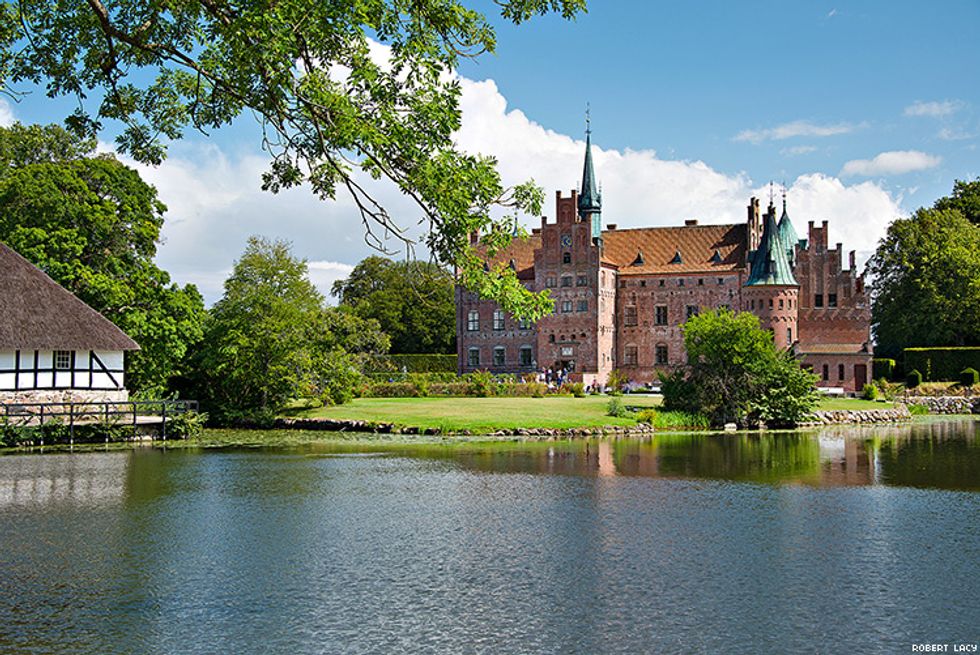
Egeskov Castle
Egeskov, which means “oak woods” in Danish, stands atop a series of oak poles in the middle of a small lake. Around a third of the castle is open to the public, including the Hunting Room, filled with game trophies, and several smaller suites including one that features Titania’s Palace—the ultimate doll house, which took more than 15 years to build, and contains over 3,000 unique objects from all over the world.
Further on, outside the town center of Svenborg, Stella Maris Hotel de Luxe eschews clean Danish lines for a mishmash of Provençal and Cape Cod design, kinda like visiting granny’s country house. Take in the setting sun out back along the private wooden dock with views of the town to the left and a quiet archipelago of offshore islets to the right.
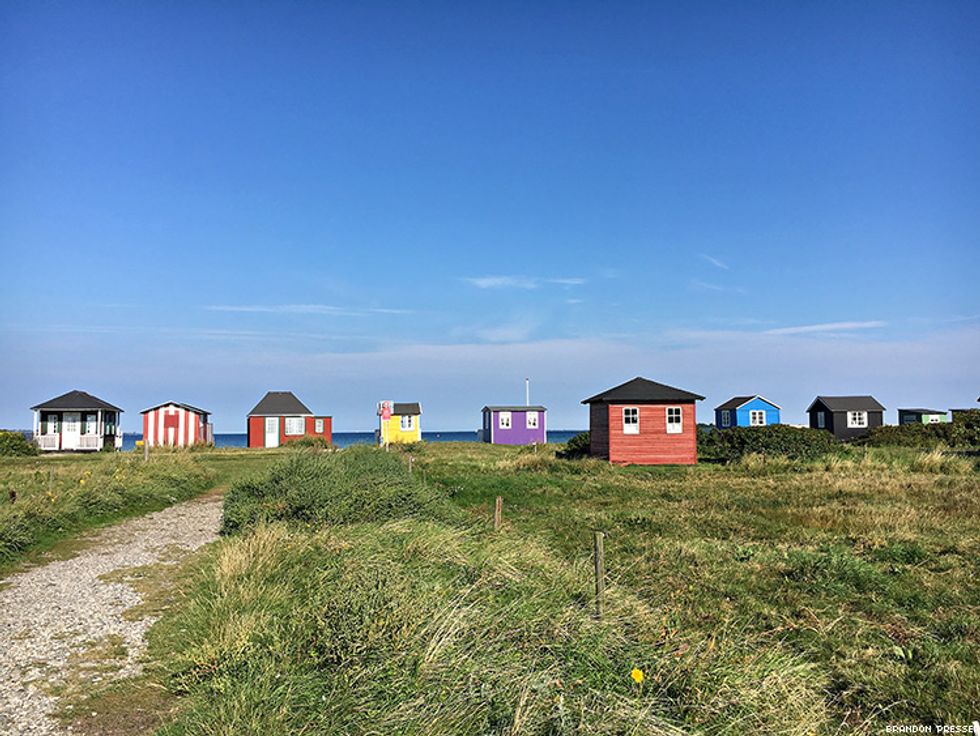
\
Ærø
Day 2: Ærø
After breakfast, enjoy the hour-long ferry ride to the island of Ærø (pronounced AY-ruh.) If the sun’s out, sit on the deck and spy on the seaside summer mansions as they gradually fade into pockets of deep green pine.
There’s a palpable sense that you’re in a different world when you get off the boat—bicycles clatter over ruthlessly cobbled lanes, and the brightly colored harbor homes of Ærøskøbing cheer the tiny port no matter the time or weather. A holidaying favorite for many Danes in the know, the island is refreshingly devoid of souvenir stalls, preferring storefronts geared toward the island’s 6,000-plus residents.
Wander out to the western shores of town to find a strand of tiny beach cabanas, each slathered in a different color of bright paint, from lime green to millennial pink.
Dating back more than a hundred years, the huts are privately owned via lifelong leases and are a true real estate anomaly: They are never for sale, as no Dane in their right mind would ever give up such a precious commodity. However, the sand surrounding the cabanas are public property—the perfect place for a relaxing afternoon picnic.
In the evening, retreat to the converted granary at Andelen Guesthouse; Adam, the British owner, spent years traveling to the far corners of the earth before settling in the village of Ærøskøbing and refurbishing the dilapidated structure into the handful of pristine rooms available to tourists today.
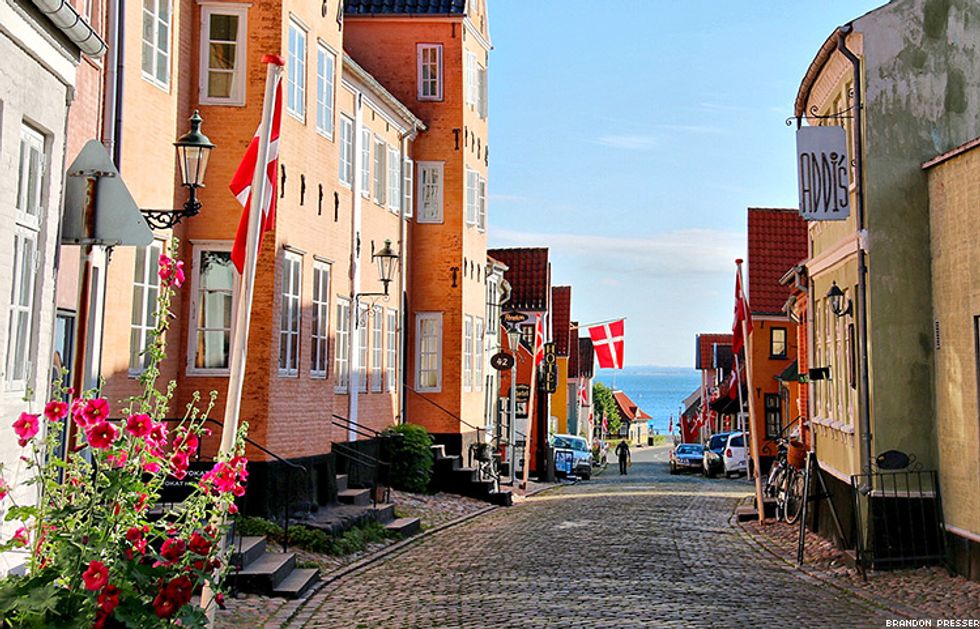
Ærøskøbing, Ærø
Day 3: Ærø
Saying “I do” in Denmark is considerably easier for those entangled in their respective countries’ bureaucratic red tape (especially LGBT couples), and Ærø has become the choice destination for many. On any given day you’ll see brides and grooms in their matrimonial best roaming around town posing for photos—locals even volunteer to be witnesses, signing five or six certificates a day. Snag a bicycle after the wedding bells toll and follow the ocean path to Marstal, the island’s largest settlement, for a heaping portion of dockside fish and chips served on giant cod-shaped plates at Fru Berg.
The town also has brightly colored beach cabanas, including a red cabin with a thatched helmet that’s become the poster-boy proxy for the entire island.
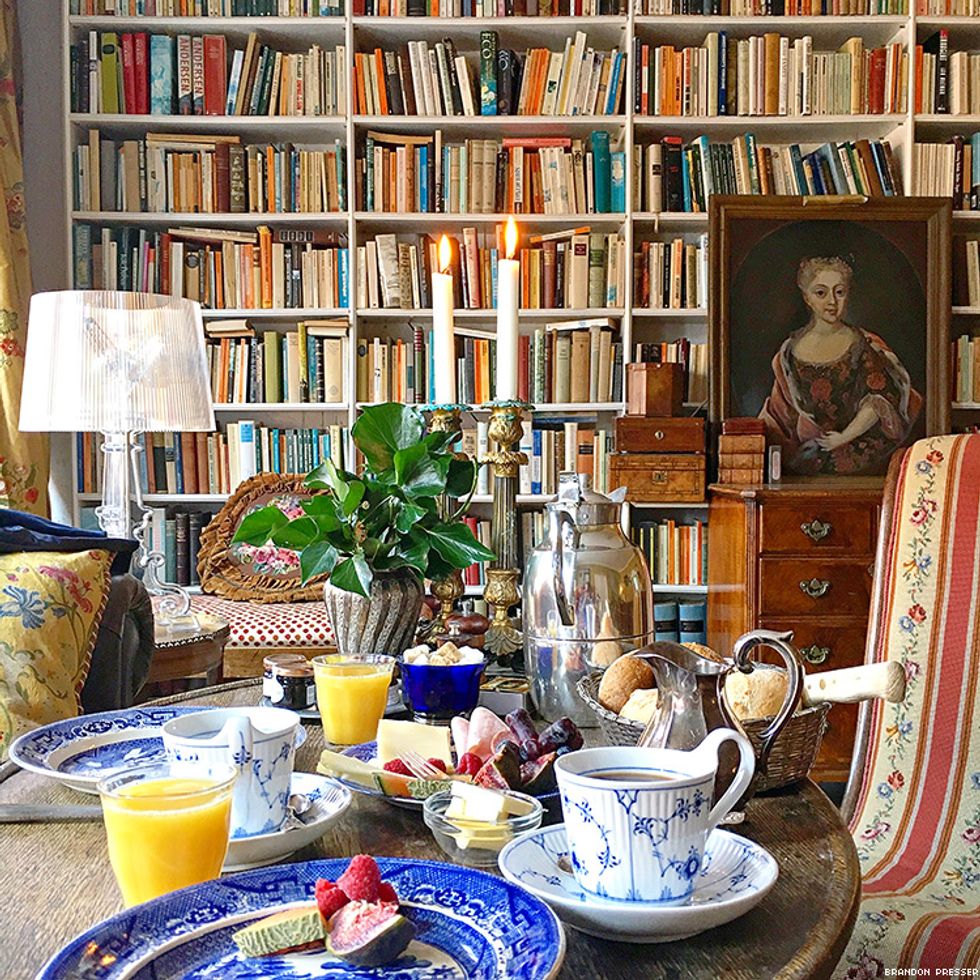
Breakfast on Ærø
Day 4: Falsled
The smaller ferry from Søby will shuttle you back to Faaborg, further west on Fyn—only a 15-minute drive from Falsled Kro.
Mentioned among Danes in hushed tones, the Relais & Chateaux property is considered one of the country’s finest stays and a favorite for local mini-mooners. The decor is Viking chic: prim Tudor walls, heavy rooftop thatching, and rooms replete with with porcelain tiles and thick wooden beams.
The suites are charming, but the main event is dinner: multi-course delicacies delivered by a dutiful legion of servers, and a mammoth cheese cart worthy of Michelin consideration.
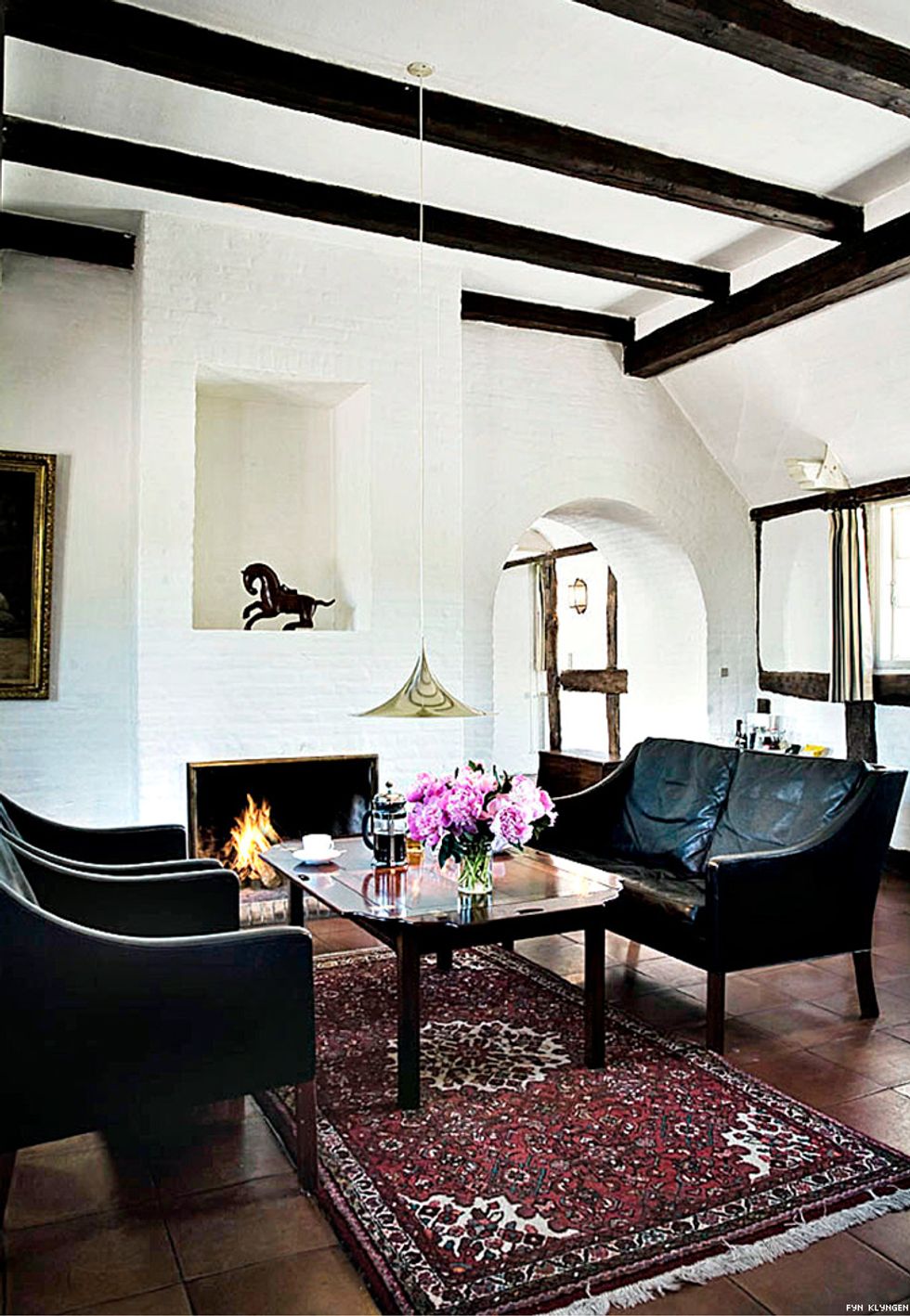
Falsled Kro
Day 5: Odense
Change is afoot in little Odense—Denmark’s third-largest city after Copenhagen and Aarhus—smack in the center of the island, around 45 minutes from Falsled. The sprawling highway, built in the ’60s and bisecting the downtown core, is now being rerouted around the metropolitan center as its medieval roots are carefully stitched back together.
Towering cranes contrast the huddle of old wooden homes, one of which—painted in yellow and black stripes—belonged to Hans Christian Andersen and his pauper parents.
Andersen is the city’s main attraction, luring thousands of daytrippers from the capital to check out his namesake museum stuffed with his personal effects, from his cane and top hat to the rope he carried around should he need saving from a fire.
Letters and paper cutouts help tell the story of his life and his oeuvres—the sanitized account of his biography appeals to every stripe of traveler, but subtle clues to his queerness are sprinkled throughout.
Plans are currently underway to transform the museum into a state-of-the-art facility designed by Japanese architect Kengo Kuma.
Although the exhibits will be dispersed throughout town during construction (set to be complete in 2020), it’s well worth spending the afternoon in Odense to appreciate his work.After a journey through fairy-tale Fyn, it’s easy to see where the author got his inspiration.